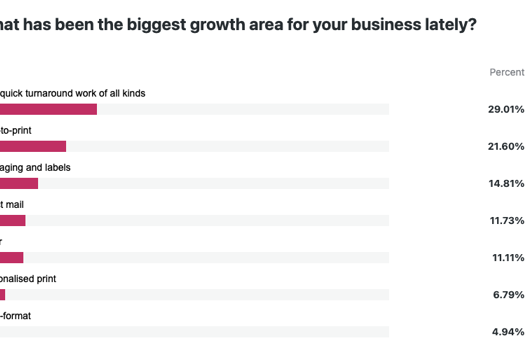Standing for ‘environmental, social and governance’, it is a set of standards that helps them measure their impact on society, the environment, and how transparent and accountable they are for their actions.
Some suggest that it has had its day and that, as the World Economic Forum (WEF) commented in the summer, “ESG investing is going through a tough patch, attracting criticism from many sides”.
It cited an example when it wrote that “BlackRock boss Larry Fink said he will no longer use the term ‘because it’s been entirely weaponised by the far left and weaponised by the far right’ [and that] many took this as a sign that investors had moved on, that ESG was just a fad after all.”
However, not all think along those lines and indeed, WEF considers the fundamental drivers of ESG “stronger than ever.”
The term first came to the fore in a 2004 report from the United Nations, Who Cares Wins, that carried what is widely considered the first mainstream mention of ESG in the modern context.
Importantly, as Dominic Harris, co-founder and director of CarbonQuota, an emissions consultancy, outlines, the report linked better corporate performance with sustainable practices.
He says that “the social and governance parts of ESG are pretty straightforward for our sector, especially given that the majority [of firms] are SMEs”. But adds that “in 2024 the environmental part is the area that attracting a lot of attention from customers, governments and NGO’s. This is where progress is needed”.
Why ESG is considered good
ESG has risen in importance because, as Harris comments, “companies that focus on ESG are often better at identifying and managing risks, whether related to climate change, regulatory changes or social issues, leading to greater long-term stability”.
In his view, strong ESG practices can “enhance a company’s reputation, build trust with customers, investors, and stakeholders, which can lead to increased customer loyalty and brand value”. Moreover, he reckons, many investors now prioritise ESG criteria, believing that “companies with good ESG practices are more likely to outperform over the long term”.
Beyond that, he says that it’s been shown that ESG and regulatory compliance helps companies stay ahead of regulations, avoid fines and legal issues while also contributing to societal goals. This, emphasises Harris, is “particularly important for the environmental impact of print products as it is part of a company’s brand and therefore has to reflect their own value”.
But there is another function of ESG – that sustainable practices often lead to greater efficiency, such as reduced energy usage and waste, which can lower costs and improve profitability.
In essence, Harris says that ESG is increasingly viewed as not only good for society but also for business performance “making it a critical consideration for modern companies”.
He worries, though, that the UK is lagging behind the rest of the developed world in relation to regulations. Even so, he thinks that there’s more to story than legal sticks: “Laws are typically adhered to around areas such as employment law or waste disposal, but when it comes to the environment, big businesses are driving change through their own ESG policies.” As a consequence, he says that “if you produce materials for these businesses, you are expected to adhere to much higher standard than legislation dictates”.
And he gives examples of AkzoNobel, P&G, Unilever, Costco and KraftHeinz, amongst others, who have engrained ESG into their being and insist that suppliers do the same.
The print sector’s view
Sadly, Harris says that the commercial reality of ‘being green’ is that it is seen as a cost and not an opportunity by many in the sector. To him only forward-looking businesses invest heavily into these areas while many simply do only the bare minimum. Here he points to the need for the UK Green Claims Code, a set of guidelines issued by the Competition and Markets Authority (CMA), to help businesses ensure that their environmental claims are accurate, clear, and not misleading.
Introduced in September 2021 the code sought to combat ‘greenwashing’ where companies make false or exaggerated claims about the environmental benefits of their products or services. And non-compliance can result in enforcement action by the CMA, including fines and legal action.
What ESG can do
So, should print firms get onboard with ESG? Are they being forced to? Can they just ignore it?
From Harris’ perspective, it’s certainly true that businesses have different motivations towards ESG, and he notes too that the size of business is important as he says that legislation applies according to turnover and headcount.
However, he says that customers usually drive printers to do more. “Certain segments are pushed hard because of the environmental impact of the product that is supplied.” He points to a business card having a miniscule level of CO2e compared with a retail display, which is why “customers maybe more focused on the biggest contributors.”
Putting the matter into context Harris says that “all packaging, display materials, books, magazines, direct mail, plastic based products, clothing and transport are areas that see lots of focus. So, if a printer produces a product for a retailer or a bank, they can expect to have advanced ESG practices. Alternatively, if a printer produces a menu for a local burger joint, there will be less focus there”.
Overall, he thinks that having a strong ESG strategy is critical to winning or retaining customers. He gives the instance of Arc-UK Technologies that “secured a large contract with Landsec partly based on a strong ESG story, but of most importance, being able to produce rich carbon footprint data to their customer.”
And then there are the supermarkets. Harris says of them that they “are driving better behaviour in their print supply chains – businesses such as Delta, Augustus Martin, SMP, Service Graphics, Kolorcraft and Fero have captured most of this work because of their strong ESG focus”,
Another stick
But if the potential to win or lose business wasn’t enough, as noted earlier, ESG is increasingly being governed by a combination of specific legislation, regulations, and guidance.
As Harris details, while there isn’t a single comprehensive statute focused solely on ESG, several address aspects of ESG such as the Companies Act 2006, UK Corporate Governance Code (for publicly listed companies), Modern Slavery Act 2015, Gender Pay Gap Reporting Regulations, UK Stewardship Code 2020 (for institutional investors), Environment Act 2021, EU Taxonomy Regulation (Retained Law), and the Pensions Schemes Act 2021.
Collectively he says that “these laws and regulations promote ESG practices by requiring companies to disclose how they are managing environmental and social risks, and by ensuring that governance structures support responsible and sustainable business practices”. Non-compliance can lead to legal penalties, damage to reputation, and loss of investor confidence.
Tips to become ESG-compliant
For those wanting to become ESG-compliant, the advice from Harris is to take time to understand relevant ESG regulations, develop a comprehensive ESG strategy, engage stakeholders, implement robust data collection and reporting, ensure good governance and train and educate employees. He also recommends engaging in continuous improvement, third-party certification and preparing for scrutiny.
Case study: Micropress Printers
50-year-old Suffolk-based Micropress Printers has been on a sustainability journey for more than 10 years having installed 3,000-plus solar panels on its 10,000sqm factory in 2013.
As Jackie Potter, finance director, outlines, “the company’s primary goal in sustainability was to achieve carbon neutrality. We achieved the status of a carbon balanced printer in 2023 working with the World Land Trust to balance our current unavoidable emissions”.
The company wants to minimise its environmental footprint by “reducing energy consumption, transitioning to renewable energy sources, and optimising resource efficiency throughout its operations”. She details that in 2024 Micropress added to its existing solar array and now hosts a 1,175kWh solar system on its roof. It also has a biomass boiler for its heating needs and a voltage optimisation unit for efficient use of electricity.
As well as better energy solutions Potter notes that the company ensures “that customers that request their paper is sourced from certified sustainable sources have this option available to them”.
Beyond environmental sustainability, Micropress actively contributes to what Potter calls “the broader spectrum of ESG initiatives”. She says that this includes “fostering a diverse and inclusive workplace, promoting fair labour practices across our supply chain, and maintaining the highest standards of corporate governance and ethical business practices”. And to this she adds that the company is also engaged in community programmes, supporting local education, and environmental conservation efforts.
The importance of ESG
Potter explains that ESG is important to Micropress “because we believe it is the right thing to do. Our commitment to sustainability and responsible business practices aligns with our core values and our vision for the future”. She acknowledges that ESG efforts are increasingly valued by the market, shareholders, and employees. However, she says that “the company’s motivation goes beyond compliance or market trends; we see ESG as an integral part of our responsibility to society, our planet, and future generations”.
She says that the firm’s efforts have been well received by stakeholders: “Clients appreciate our commitment to sustainable printing practices, which has become a key differentiator in the market. Employees are proud to work for a company that prioritises ethical practices, and this has positively impacted our talent retention and attraction.
“Shareholders have also recognised the long-term value that our ESG initiatives bring to the company.”
Benefits to the company
Not unsurprisingly Potter says the Micropress’s ESG-friendly approach has yielded significant positive financial results. This has included benefits with new business generation: “Our commitment to ESG has been a compelling factor in winning contracts with environmentally conscious companies and organisations.”
Some of the measures have been financially rewarding; being an early adopter of a biomass boiler led to success with the government’s Renewable Heat Incentive.
Similarly, Potter says that greater energy efficiency and waste reduction has resulted in cost savings. Additionally, she says that “sustainable sourcing has helped us mitigate risks associated with supply chain disruptions and exposure to market prices”.
But Potter highlights the need to balance ESG with sound commercial business decisions. On this she says that “we recognise that maintaining financial viability is crucial to achieving our long-term environmental and social objectives”.
She adds: “This means carefully weighing the impact of our ESG initiatives against their economic implications to ensure that we can continue to grow and invest in further sustainability efforts.”
The future
Micropress is, emphasises Potter, on a journey. She says it’s continually considering the latest advances in equipment and is “currently looking to reduce the need for physical print materials internally by enhancing its digital platforms”. It is also expanding its employee engagement programmes to, as Potter outlines, “include more robust ESG training and awareness initiatives”.
But as for further integrating ESG into the supply process, Potter says that the company uses supplier assessment criteria “to ensure that all partners meet our environmental and social standards” and it is “also working closely with our suppliers to promote transparency and sustainability throughout the supply chain, encouraging them to adopt similar ESG commitments”.
Case study: Arc-UK Technologies
Arc-UK Technologies is a print, design, signage, and document scanning company headquartered in Dartford.
Darren Moorhouse, sales director, reckons that ESG factors are increasingly recognised as essential for long-term business credibility and sustainable business development.
From his standpoint, adhering to ESG principles offers business advantages such as better risk management, improved social concerns, and control over governance challenges “which may potentially result in reputational erosion”.
He also thinks it helpful in attracting investment because “companies that commit to ESG principles potentially enjoy a stronger brand reputation”.
And then there’s the ESG practices Moorhouse sees “reducing waste and improving energy efficiency, lowering operational costs, thus improving profitability and sustainability”.
Lastly, he cites better talent attraction and retention where a strong ESG profile makes a business a more attractive proposition for prospective new employees who only want to work for a socially responsible company.
But despite the benefits, Moorhouse knows some view ESG as a passing fad because of the perceived costs, general scepticism about the effectiveness of ESG, short-termism that sees ESG as irrelevant or a distraction, and a lack of regulation because of inconsistent regulations, reporting standards and complexity which makes ESG difficult to navigate.
Customers like ESG
For Moorhouse customer perspectives on ESG vary significantly and tend to be “driven by industry specifics and other varying factors, most of which are not within our control”.
Says Moorhouse: “Some customers, especially those in industries like finance, consumer goods, or technology solutions, are highly focused on ESG and consider it critical to their purchasing decisions. But others may prioritise cost and convenience over ESG concerns.”
However, when it comes to finance Moorhouse is unequivocal: “ESG is increasingly important to funders and investors, many of whom apply ESG metrics to assess the long-term viability and ethical standing of companies.”
And then there’s the matter of the wider society including local stakeholders and non-governmental organisations. He warns here that “companies that neglect ESG risk negativity from both the local and more widespread community.”
The print sector
Moorhouse knows that the print sector’s regard for ESG is mixed.
On the one hand, he cites the sector’s reliance on natural resources and energy, and that “there is a growing focus on environmental sustainability, including the use of recycled materials and reducing waste”. But on the other, Moorhouse sees diverse rates of adoption: “While some companies in the print sector have embraced ESG, others restrict their resource investment due to cost concerns or a lack of perceived necessity.”
And then, of course, there’s customer-led demand. On this Moorhouse notes that “print companies serving clients with strong ESG commitments are more likely to implement ESG practices to align with customer expectations.” He adds that “some tenders now insist upon potential applicants being ESG compliant”.
All this aside, ESG has helped Arc with new business opportunities. Equally, though, he points out that ignoring ESG could have resulted “in missed opportunities, potential regulatory non-compliance, and a weaker competitive position in the market. It could also have led to reputational damage and loss of customer trust”.
And Moorhouse says to not forget the impact on employee morale; staff can feel more engaged and motivated working for a company that demonstrates a commitment to social and environmental responsibility.
Tips
In ending, Moorhouse offers several tips to firms looking to become ESG-compliant. He says to “start small with achievable goals and gradually expand your ESG initiatives as business grows”. He also thinks it important to engage stakeholders and involve employees, customers, and suppliers as this can “generate support and stimulate ideas for improvement”.
Next, Moorhouse recommends measuring ESG performance and reporting to stakeholders to build credibility and allow for improvement.
Then there is the need to keep up to date with ESG regulations and best practice to ensure the business remains compliant and competitive. Allied to this are certifications to demonstrate commitment to ESG.
But ultimately, Moorhouse says it’s essential to “make sure that all employees understand the benefits of ESG, both for the company and for their own work environment.” He believes that this can help build a culture that supports sustainability and ethical practices.
In summary
Whatever your view of ESG, it’s certain that it’s now embedded in the world of business. Granted, the need to comply will depend on business size, work and client demands. But it’s perfectly clear that compliance can only be a good thing.










